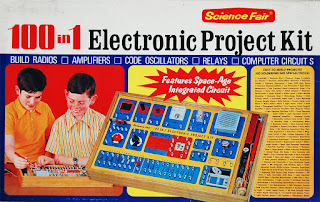In fact, it is pen and paper.
Here’s the tactic: Write your next sales letter by hand, with a pen. Then print and mail it.
When you do this, 3 good things happen:
1) You create a promotion that is instantly creative and 100% unique to you
2) Your recipients will appreciate the time you took to write a message “just for them” ... even if the original letter is mass-printed
3) Your recipients are more likely to read and respond to your letter
Here's an example, from one of my clients ...
When the dust settled, he earned $104,000 from $4,038 invested in that handwritten sales letter.
That's an astounding ROI of 25.76 to 1.
I wrote the copy. He hand-wrote the letter. Then we printed and mailed it.
Why do hand-written letters work so well?
Think about it. Your prospects spend more of their life communicating by computer or smart phone than by pen and paper. Every day, they get credit card offers and bills in the mail. Maybe a catalog or two. But actual handwritten letters? Why, those are so rare, they're treated like gold ...
... which is EXACTLY how you want your sales letter to be treated.
A handwritten letter can work in any B2C or B2B market because markets don’t buy, people do. A person must read your promotion before they can respond to your offer.
And if you're thinking, "My handwriting is terrible!" -- sorry, that's not a valid excuse. Find someone who can write neatly. Start with your family. Do you have a teenager, as I do? Congratulations. You have child labor. And your costs to make a handwritten letter at home will be lower than Nike’s costs to make shoes in China.
Besides, you don’t need stylish handwriting. Ugly can be beautiful.
Case in point: The butt-ugly issue of my newsletter below ...
It was handwritten by me. And it's still the most-talked-about and responded-to issue I ever did. Ugly handwriting can be like a traffic accident -- people slow down to look at it. However, your ugly handwritten message must be relevant to your audience, or they will speed past it.
And here’s another twist: Hand-write your letter in crayon, instead of pen, and make the “author” one of your children or a relative’s child.
That’s what my client Bill Gough did for his insurance agency a few years ago. Take a look below. This is not hard ...
One more thing that should motivate you to try this: Your competition is, quite simply, NOT going to hand-write anything. Prove it to yourself. Answer this question: How many handwritten sales letters or messages of any kind have you seen from your competitors? I thought so. Now, do you see the opportunity?
Remember, when you turn the usual into the unusual, you can make your business remarkable, by creating an atmosphere where your prospects and clients tell others. When others are remarking about you to their friends, family, and co-workers, you are -- literally -- remarkable.
Now take the next step.
Click here to book a call with Kevin Donlin now
I wrote the copy. He hand-wrote the letter. Then we printed and mailed it.
Why do hand-written letters work so well?
Think about it. Your prospects spend more of their life communicating by computer or smart phone than by pen and paper. Every day, they get credit card offers and bills in the mail. Maybe a catalog or two. But actual handwritten letters? Why, those are so rare, they're treated like gold ...
... which is EXACTLY how you want your sales letter to be treated.
A handwritten letter can work in any B2C or B2B market because markets don’t buy, people do. A person must read your promotion before they can respond to your offer.
And if you're thinking, "My handwriting is terrible!" -- sorry, that's not a valid excuse. Find someone who can write neatly. Start with your family. Do you have a teenager, as I do? Congratulations. You have child labor. And your costs to make a handwritten letter at home will be lower than Nike’s costs to make shoes in China.
Besides, you don’t need stylish handwriting. Ugly can be beautiful.
Case in point: The butt-ugly issue of my newsletter below ...
It was handwritten by me. And it's still the most-talked-about and responded-to issue I ever did. Ugly handwriting can be like a traffic accident -- people slow down to look at it. However, your ugly handwritten message must be relevant to your audience, or they will speed past it.
And here’s another twist: Hand-write your letter in crayon, instead of pen, and make the “author” one of your children or a relative’s child.
That’s what my client Bill Gough did for his insurance agency a few years ago. Take a look below. This is not hard ...
One more thing that should motivate you to try this: Your competition is, quite simply, NOT going to hand-write anything. Prove it to yourself. Answer this question: How many handwritten sales letters or messages of any kind have you seen from your competitors? I thought so. Now, do you see the opportunity?
Remember, when you turn the usual into the unusual, you can make your business remarkable, by creating an atmosphere where your prospects and clients tell others. When others are remarking about you to their friends, family, and co-workers, you are -- literally -- remarkable.
Now take the next step.
Let's talk by phone about growing your business. I'll give you as many insights as I can fit into 30 minutes -- a micro seminar, if you will :-) No obligation. No sales pressure. Click below ...














